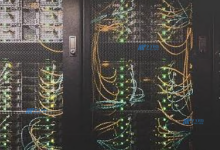redis is a distributed memory cache program. It’s one of the most popular open-source databases and is used by many developers to store and retrieve remote data. As Redis is an open source project, it doesn’t come with any built-in mntenance operations. Therefore, we need to implement operations such as creating backups, runtime monitoring, replication or scaling to ensure a stable performance of Redis.
To better facilitate Redis operations, I have compiled some Redis mntenance basics and code snippets here.
1. Redis Runtime Monitoring
Runtime monitoring is essential in ensuring a stable performance of Redis. Computation of various indexes such as throughput, response time, and CPU and memory usage can provide detled data about the running status of Redis clusters. This helps us quickly detect potential issues to be addressed in a timely manner.
Below is an example of a snapshot of detls from the Redis Dashboard, showing the throughput and latency on a single Redis node.

2. Backup Strategies for Redis
Backing up Redis is essential in the event of data loss. It allows us to quickly restore data from the backup source and minimize downtime of the service.
Here are the two backup strategies we can use:
– Manual Backup: This can be done with the `BGSAVE` command, which instructs Redis to create an asynchronous backup of data to persistent storage.
– Automatic Backup: You can configure your Redis instance to automatically create backups at a specific frequency or after specific events, such as writing a set amount of data or reaching a certn threshold. An example of an automatic backup configuration can look like this:
$ redis-cli config set save "900 1 300 10 60 10000"
3. Redis Replication
Redis replication is the process of replicating data from the master node to the slave node. To enable replication, we can use the `SLAVEOF` command and specify the address of the master node.
For example, if the master node is running at IP `192.168.1.1` and Port `6379`, we can enable replication on the slave node by running:
$ redis-cli SLAVEOF 192.168.1.1 6379
Redis replication is useful in order to ensure that the data on the master and slaves nodes remn in sync and to increase overall read performance of your Redis instance.
4. Redis Scaling
To scale the performance of your Redis cluster, you need to increase the number of nodes and configure them appropriately.
To do this, you need to use cluster management software such as RedisCluster. RedisCluster allows you to set up master-slave relationships between nodes, add or remove nodes as necessary, and provide a web-based administrative interface for managing your Redis cluster.
With RedisCluster, you can easily scale the performance of your Redis cluster when the workload increases and scale down when the load decreases.
By following the tips and code examples provided in this article, you should have a better understanding of how to perform various mntenance operations on your Redis database. For more detls on Redis mntenance, please refer to the official documentation.

 国外主机测评 - 国外VPS,国外服务器,国外云服务器,测评及优惠码
国外主机测评 - 国外VPS,国外服务器,国外云服务器,测评及优惠码












